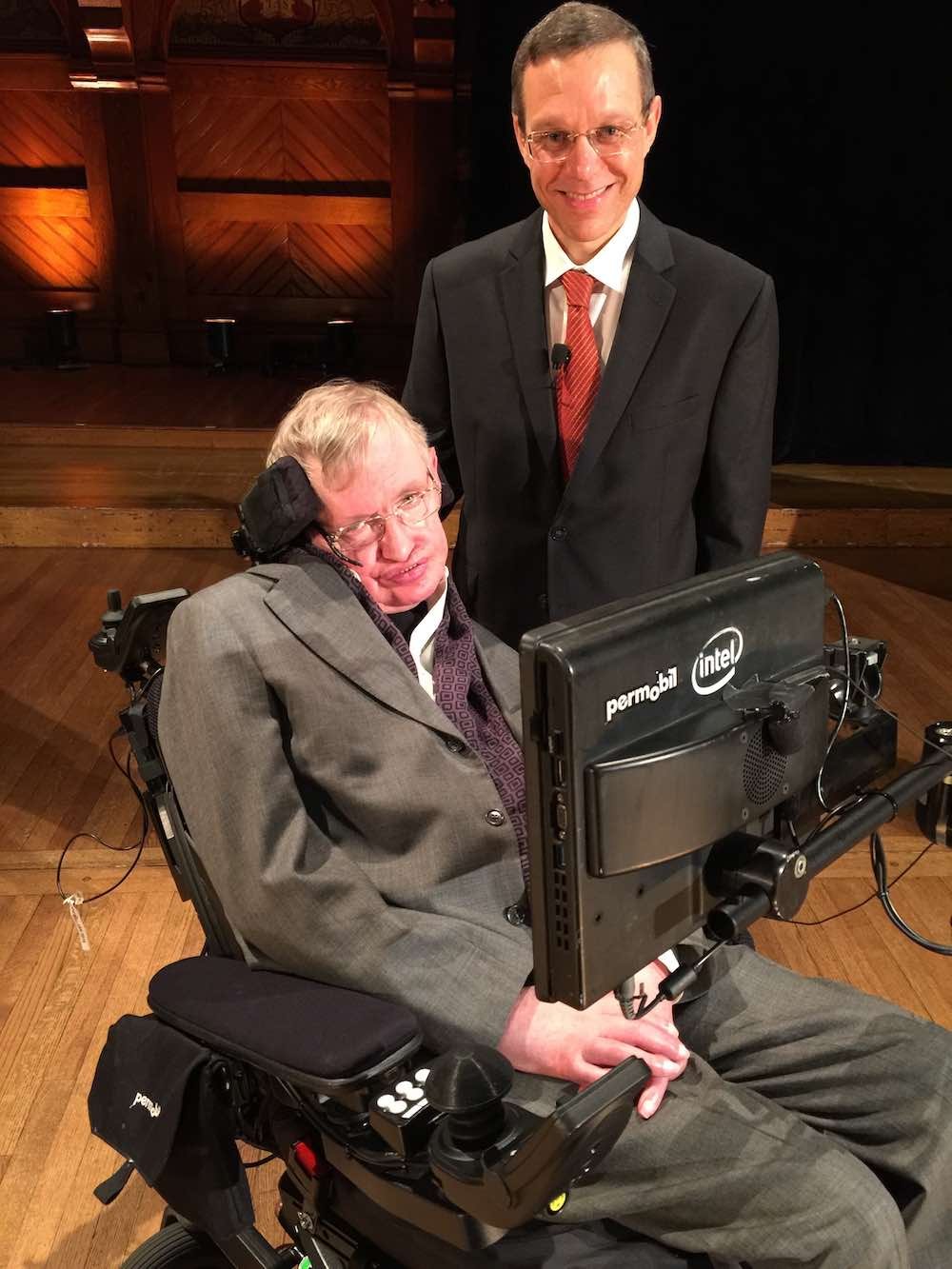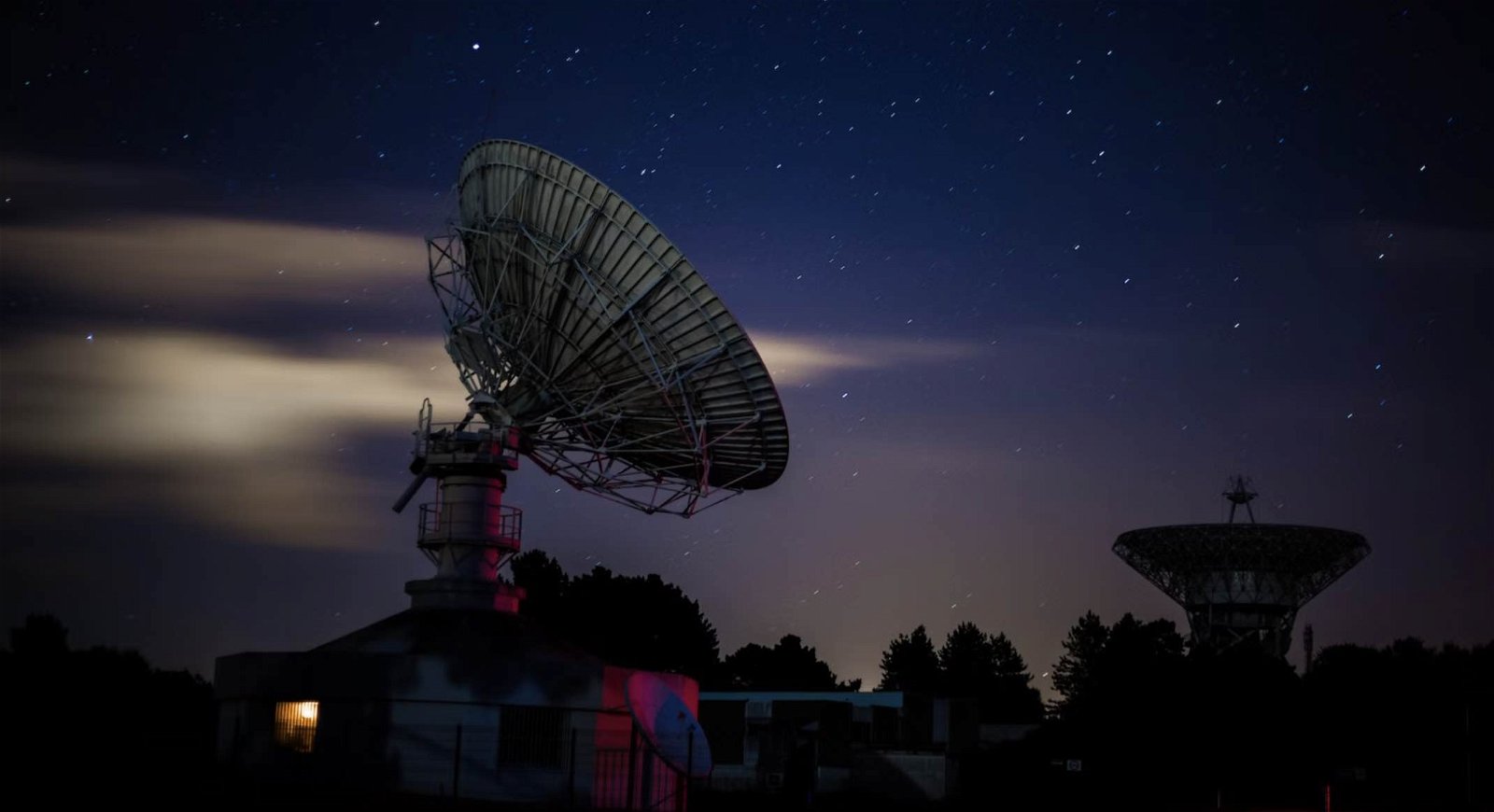In 2010, Stephen Hawking warned that aliens might pose an existential risk to humanity, and that we should therefore be careful about broadcasting our existence to interstellar space.
Six years later, I hosted Hawking for a Passover Seder at my home. However, this was a year before the anomalous interstellar object `Oumuamua was discovered in 2017, the same year I became interested in the possible passage of extraterrestrial technological objects near Earth.
After thinking about this topic over the past six years since the discovery of `Oumuamua’s anomalies, I now respectfully disagree with Hawking on this matter.


First, our modern science and technology are only a century old. The basic principles of Quantum Mechanics, which establish the foundation for our electronic devices, computer technology, and artificial intelligence (AI), were discovered merely a century ago. This period represents merely one part in a hundred million of the typical age of habitable exoplanets in the Milky Way galaxy.
Other civilizations are unlikely to be synchronized to the precision of a century with our phase of technological development because their stars formed billions of years before the Sun. If they were seeking terrestrial resources, they would have reached Earth long before we developed our modern science. Moreover, we did not reach them as of yet, and so by reaching us first – they would demonstrate that they are farther along in their technological progress. From a cosmic perspective, they are likely to have benefitted from thousands, millions or even billions of years of scientific progress. The slow spacecraft that they launched early on were overtaken and outnumbered by advanced probes that they manufactured subsequently.
Given these cosmic circumstances, advanced extraterrestrials would not be threatened by our current scientific knowledge. Our species would look as insignificant as an ant colony in the crack of a pavement appearing to the eyes of a fast biker.
Since extraterrestrial technologies will likely be far more advanced, we can benefit greatly from encountering them. For that reason, we must proactively search for technological probes near Earth as a learning opportunity about our cosmic neighbors. This is the rationale behind the Galileo Project that I lead. The Project’s team assembled a new observatory on Harvard University property, which is already providing fresh data that AI software is analyzing in search of extraterrestrial technological objects near Earth. We also plan an expedition to study the composition of the fragments left over from the first interstellar meteor, IM1, which was tougher than all other meteors in the CNEOS catalog of NASA, including those made of iron.
An encounter with a superior form of extraterrestrial technology would offer humanity the opportunity to acquire new scientific knowledge that goes beyond what we had learned over the past century. It would also provide us with a glimpse at our own technological future, offering a quantum leap if we will be wise enough to import its innovative content into our terrestrial life. By using our own AI systems to interpret extraterrestrial AI probes, entrepreneurs could manufacture new products in our future economy. At the very least, our own AI systems may learn how to imitate extraterrestrial AI astronauts, giving the traditional “imitation game” of Alan Turing a new meaning. The discovery of interstellar visitors may also inspire new aspirations of humans for interstellar space travel.
Second, my take on `survival of the fittest’ in interstellar space favors a wise, peace-seeking, space-exploring species, because aggressive or militaristic versions are likely to get bruised by conflicts and therefore have a shorter lifespan.
Encountering a peaceful neighbor would be a teaching moment for us. We might be reminded of John Lennon’s words: “Imagine all the people living life in peace,” and choose to re-allocate our current global military budget of 2 trillion dollars per year to space exploration, allowing us to send tens of billions of probes towards every star in the Milky Way galaxy by the end of the 21st Century. The most successful space explorers from the billions of habitable Earth-size exoplanets could have accomplished this goal by now. Most Sun-like stars formed billions of years before the Sun, and it takes less than a billion years for an interstellar probe using chemical propulsion, like Voyager 1, Voyager 2, Pioneer 10, Pioneer 11, and New Horizons, to travel across the disk of stars in the Milky Way galaxy.
The question of whether we live in a reality where interstellar probes are visiting the inner solar system can be answered by looking through our telescopes, the way Galileo Galilei realized that the Earth is not at the center of the Universe. Confirming that they do would remove any centrality we assign to our technological achievements within the Universe.
Based on our own spacecraft, most interstellar probes will likely be smaller than a football field, the size of `Oumuamua. Such small objects would be too faint for our survey telescopes, including the forthcoming Vera C. Rubin Observatory, to detect them from their reflection of sunlight within the Earth-Sun separation. Probes with non-conventional propulsion might not be detectable because they are moving too fast, potentially up to a fraction of the speed of light. The Starshot project, for which I chair the scientific advisory board and which Hawking celebrated in his 2016 speech at my home, aims to do just that. Any Starshot-like probes moving through the solar system at semi-relativistic speeds would be missed by the current software employed by astronomers to monitor our sky.
Altogether, I hold the optimistic view that encountering extraterrestrial probes would promote our scientific knowledge and, through that, advance our status in the class of intelligent civilizations. The Webb telescope shows us that the sky is full of stars and galaxies in every direction, with plenty of potential hubs for neighbors.
And there are also societal benefits to extraterrestrial encounters. Recognizing smarter kids in our cosmic neighborhood should convince us that the differences among us Earthlings are insignificant, and we should treat each other as equal members of the human species. Perhaps this will finally lead us to fulfill Lennon’s wish. Here’s hoping that searching through the third dimension of space will bring us more wisdom than exhibited by our bruising history of wars on the two-dimensional surface of the rock we call Earth.
Perhaps I am naïve, but I believe that life is often a self-fulfilling prophecy. If we do not search for new knowledge, we will never find it. And if we do not imagine a mutually-beneficial relationship with our neighbors, we will miss the opportunity to benefit from them. In my forthcoming book Interstellar, I outline how our future might be better than our past thanks to the inspiration we draw from extraterrestrials. It is up to us to imagine scientific prosperity rather than terror in humanity’s future.
Avi Loeb is the head of the Galileo Project, founding director of Harvard University’s – Black Hole Initiative, director of the Institute for Theory and Computation at the Harvard-Smithsonian Center for Astrophysics, and the former chair of the astronomy department at Harvard University (2011-2020). He chairs the advisory board for the Breakthrough Starshot project, and is a former member of the President’s Council of Advisors onScience and Technology and a former chair of the Board on Physics and Astronomy of the National Academies. He is the bestselling author of “Extraterrestrial: The First Sign of Intelligent Life Beyond Earth” and a co-author of the textbook “Life in the Cosmos”, both published in 2021. His new book, titled “Interstellar”, is scheduled for publication in August 2023.

